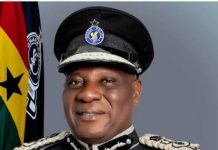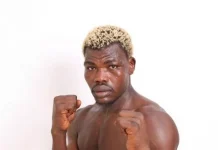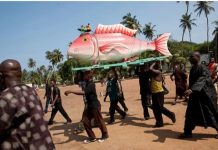It is said that people who risked their lives to fight and protect our country aren’t properly taken care of when they come back home. Gabe from the book fences is a prime example of how the lack of proper care and funds by the government can lead to a hopeless case. Gabriel Maxson popularly known as Gabe is troy’s brother.
He fought in the war as a strong and healthy young man. He suffered a traumatic head injury in the war that lead to him getting a metal plate in his head, causing him to be mentally unstable. This affects him in a way that he acts in a childlike manner.
He also hallucinates and believes that he can see biblical figures like Angle Gabriel, St. Peter, and the gates of heaven. Even tho the government gave Troy alliance on Gabe’s behalf, the amount given still wasn’t enough for Gabe to be taken properly care of Gabe.
According to the U.S Department of Veteran Affairs, a veteran is more likely to receive more money and beneficial royalties only if their conditions are physically exhibited. This also applies to combat injuries and any signs of a chronic illness, in that case, a test will be administered and the benefits will be distributed accordingly.
While veterans with mental illnesses like PTSD that developed before or after the war usually have the lowest beneficial incomes. Even though times have changed, soldiers, military men, and other service personals are not being properly taken care of after their duty is served. And even if the government gives them a disability check, it still seems like the amount isn’t sufficient enough especially for the service that our fellow veterans have provided for our country.
(Work cited)
Martin Luther King Jr., Southern Baptist preacher turned political activist, inspired a nation to stand up to the status quo and make a change. He had a dream, as he proclaimed in his most famous speech, and by sharing that vision with passion and dignity, he led the civil rights movement to transformative action, tearing down the negative belief structures that denied freedom and equality in American society.
Michael King Jr. was born on January 15, 1929 in rural Atlanta, Georgia. His father and
grandfather were ministers, serving as pastors of Ebenezer Baptist Church. King Jr. would follow his father’s lead, including his adoption of the name Martin Luther in honor of the German Protestant religious leader.
Although Martin and his two siblings grew up in a strong family environment, King Sr. was very hard-handed, whipping his son regularly and so violently that neighbors reported hearing the beatings.
Nonetheless, his father’s pride was a positive model for Martin as he witnessed his resistance to racial prejudice. In one incident, he and his father walked out of a shoe store when they were told to move to the back if they wanted to be served.
Martin entered public school in Atlanta, Georgia at age 5. Despite the difficulties he faced in the segregated system, he did extraordinarily well, skipping two grades at Booker T. Washington High School to start college when he was only 15.
As a schoolboy, Martin experienced the impact of segregation directly. When he was 6 years old, he made friends with a white boy whose father owned a business in their neighborhood. They went to different schools, but they played together until the boy’s father found out and forbade their friendship.
King battled depression for the first half of his life, in part because of the trauma of “racial humiliation” in the segregated south. He had to overcome feelings of self-loathing and resentment toward white people for the way he, his family, and his community were treated.
He recalls one conflict in particular: returning to Atlanta after a winning debate competition, King and his teacher were ordered to move to the back of the bus; King refused, but his teacher reminded him that he would be breaking the law if he didn’t comply.
He reports feeling “the angriest I have ever been in my life.” While Martin excelled in his college studies, earning a degree in sociology in 1948, then entering seminary school where he became valedictorian and student body president, he had trouble with personal relationships.
He was dating a white woman, the daughter of a German cafeteria worker at this school, and wanted to marry her, but his family and friends warned him of the negative reactions he would face from whites and blacks alike.
A friend claimed that Martin “never recovered” from the forced breakup. Another great individual falls into this zero to hero , Pele is a name no soccer fan can do without, and the man is touted to be the best soccer player the world ever saw.
Pele did not have the world handed over to him on a silver platter, he worked his way sweat and blood to the upper echelons of sports persons.
LEARN MORE
What is it that had the young man get back onto his feet every time he was tackled to
the ground? What inspired him to take no notice of buffeted bones in his body, and return to the
soccer field at the earliest?
The answer to the questions posed is something that you must experience to believe. When your work is not just work but the element that defines you, and when you derive satisfaction that is greater than any pain that can be inflicted on you, nothing else matters, and you plough on.
Pele Zero to hero Story
Pele was born Edson Arantes Do Nascimento on 3 October 1940. His father was a soccer player who was forced to retire from the game when he fractured his leg. Young Pele grew up in poverty, and used to polish shoes to help contribute to the family income.
The boy showed great interest for, and talent in, soccer and was playing for a local minor league club when he got his first break.
The 11-year-old Pele caught the eye of Waldemar de Brito, a premier player of the nation. Brito is said to have presented Pele to skeptical directors at Santos, boldly stating that Pele would be the greatest soccer player in the world. Whether or not he truly believed in his passionate statement at the time he made it remains immaterial.
Pele proved himself to Santos when, at the age of 16, he scored a goal in his very first
mainstream match, which was against Corinthians FC. The world began to sit up and pay attention when a 17-year-old Pele scored a whopping 6 goals during the 1958 World Cup, thereby leading the Brazil National Team to victory.
Brazil won its first World Cup that year. With word of his brilliant performances spreading like wildfire, and a wide range of sports clubs showing unmasked interest in having Pele play for them, Brazil declared its star soccer player a national treasure, thereby barring Pele from playing for any non-Brazilian club or corporation.
Pele was a vision when on the field, with his agile 5 ft. 8 inches frame swiftly running across the arena, his deft feet expertly dribbling the ball. Besides being hailed for his extraordinary command on the ball and powerful kicks, Pele also commanded admiration for his powerful head shots.
In 1962, Pele was unable to play alongside his team during the World Cup as he sustained severe injuries during the first match of the tournament. However, in 1970, Pele led his team to win what would be the 3rd World Cup for his nation.
His goal was precious in more ways than one – not only was it Brazil’s 100th World Cup goal, but it was also a goal that was close to Pele’s heart as he had scored it with his head. Pele’s dad was adept at headshots, and is reported to have made 5 headshot goals in a single match, and the move was special for Pele.
Pele’s score board is stunning. In all, the master soccer player has scored 1,280 goals, and is second only to Arthur Friedenreich, another Brazilian soccer player with 1,329 goals in his kitty. Pele’s average worked out to one goal at every international game.
92 hat tricks and 97 international goals are the statistics that place his at the top of his
game, with his statistics being the highest ever. After he retired, Pele returned to active soccer for a short span of 2 years to promote soccer in North America.
He played in the North American Soccer League to attract the interest of millions of Americans towards the “beautiful game” of soccer. He played an exhibition game between Cosmos and Santos, playing for the former during the first half, and for the latter team during the second half.
He used his popularity to spread the message of love and peace among the followers of the game,
and had crowds chanting “Love! Love! Love!” during the exhibition match. Pele invested a lot of time and effort to advance the popularity of soccer.
He penned autobiographies, and even starred in various documentary and semi-documentary films that focused on soccer, or on his life as a soccer player. Towards the end of his soccer career, Pele also went to display his acting skills, and he is also a musician. His other talents, too, were invested to promote soccer and goodwill among populations.
Lessons from Pele’s story
All that a person who thumbs down Pele’s biography will see are a series of success
stories, with glorious inputs from the player himself, sports commentators and ecstatic
audiences highlighting the legend’s prowess on the field.
Few care to recount the instances when Pele suffered grievous wounds during a game and quit the field in tears, only to return better than before for the next match. Here is the sportsmanship that
propelled the player to be the man he is.
The world of soccer would still be waiting for its king if Pele was an ordinary player who was on the field for merely fame or money, rather than true passion for the sport. One lesson that can be learnt from Pele’s story therefore, is that the key to success is to indulge in that which your heart lay.
Another lesson is that a successful man is not the one who does not meet failure, but the one who accepts failure as a part of his learning process and moves on. An adult who is trying to attain a set goal must be like a toddler learning to walk – not afraid of falling down, and getting up every time he falls down to try and walk again, one step at a time.
To me it seems Oprah Winfrey is everywhere. On a recent flight I happened to pick up a
random magazine and realized Oprah even publishes her own magazine. There is absolutely no doubt about Oprah Winfrey’s fame, financial status, or impact on
the world.
My cynical side always associated her personal success with heavy marketing and excessive branding efforts, but whether or not I agree with every marketing tactic, it is impossible to dispute that she has achieved status as a role model to millions. She has taught any of us who were willing learn: “zero to hero” means that, regardless of where or how you begin in life, you can make a difference in the world.
LEARN MORE
From Zero…
It would be impossible to dispute the odds that were stacked against this young unknown African American child born in Mississippi in the 1950s. Although Oprah Winfrey came into people’s living rooms daily for two-and-a-half decades, she did not start out there.
Her own history, and rise to world-renown influence, is quite a story. Zero, or the starting point for Oprah Winfrey, refers to her youth and childhood as an abused young girl growing-up in the racially torn Deep South. Oprah was born into a series of circumstances which caused her to begin life with what some would categorize as indisputable disadvantages.
Despite the lack of funds that were available to her family living on their farm in Mississippi, despite the fact that Oprah was not protected from sexual abuse at the age of nine, and despite the fact that she may have been seen by some as “less than” for being born with dark skin in 1954, Oprah new that she was destined for greatness.
She believed that she could have an impact on the world, and she was willing to work hard
in order to do that.
The Journey…
Broadcasting and Communications took her from radio programs to small unknown
television shows that seemed to be short on content structure.
Oprah knew that she would need to design a format for herself that would keep the audience coming back. In the meantime, authenticity was the key Chicago called in the 1980s. Oprah was in her 30s, and ready for the change and challenge.
Initially, she still struggled in attempting to find a format. Very quickly, however, Oprah discovered that competing with other “talk shows” that focused on exploitation rather than heart was not the way she wanted to win an audience.
In fact, one of the most powerful ways in which Oprah did choose to differentiate herself was to share some of the most painful and violating experiences that anyone could endure. She shared and recounted these experiences publicly, on an open platform.
By doing this, not only did she endear herself to a loyal and growing audience, she developed a safety zone through which communication regarding previously taboo subjects could be vented and purged.
In effect, Oprah created a healing zone for millions of viewers and fans. People began
to find themselves gravitating toward the Oprah show as a counseling session of sorts.
Eventually, she introduced Dr. Phil as a means to provide an entirely credible and universally recognized authority who would take on the deeper problems of the masses, particularly as an outlet for those without available resources to enlist their own therapist.
Oprah, the Hero
These pivotal turning points began the monumental growth phase of Oprah’s journey forward. This growth phase saw the transition from her local Chicago-based show to a daily program with first National, and then International, reach and appeal.
Oprah not only became a brand, and a household name; she became a phenomenon. Key aspects of the Oprah Winfrey show and legacy, including the Angel Network and the Oprah Book Club, have become anchors of philanthropic movements and standard gauges for quality in literature.
These, however, were not anchors that were implemented overnight. In fact, Oprah was in her mid-thirties as the show in Chicago presented itself in her life, and it took time to sprout wings. More than another decade would pass before the Angel Network came into being.
Like Rome, after all, the Oprah Winfrey Empire was not built in a day. Neither were her school buildings in Africa. Oprah has said repeatedly over the past twenty-five years that there are many key
things to which she attributes her success.
Of course, she has been willing to work hard. She builds teams of people who share her vision and goals, and these people understand how to implement these goals effectively. Also, she carefully monitors all of the finances and financial decisions related to each portion of her enterprises
Lessons We Can Learn From Oprah’s Journey
“I don’t think of myself as a poor deprived ghetto girl who made good. I think of myself
as somebody who from an early age knew I was responsible for myself, and I had to
make good.”
Among the many lessons to be gleaned from Oprah Winfrey’s profound success story, one relates to the prophetic vision of men like Martin Luther King, Jr.: the power of belief can subsequently create manifestations of greatness.
Oprah Winfrey, in her very heart and soul, knew the level to which she had the capacity to contribute to society. She saw her task positively, as an obligation as much as a possibility.
From among all of the notable accomplishments and accolades to date, what is consistent and over-arching is her effort to uplift people’s spirit. In the midst of the abundance of low-class reality programs that blatantly exploit negative and crass attention-seeking behavior, Oprah has created an entire network that intends to showcase people and events that can uplift and educate.
Whatever you think of Oprah, she has earned her way, step-by-step, and she continues
to do things her way. If each of us can be as committed to a personal mission as she is,
I believe our life will be well spent. Works cited aka source for most of the information can be found here.











































